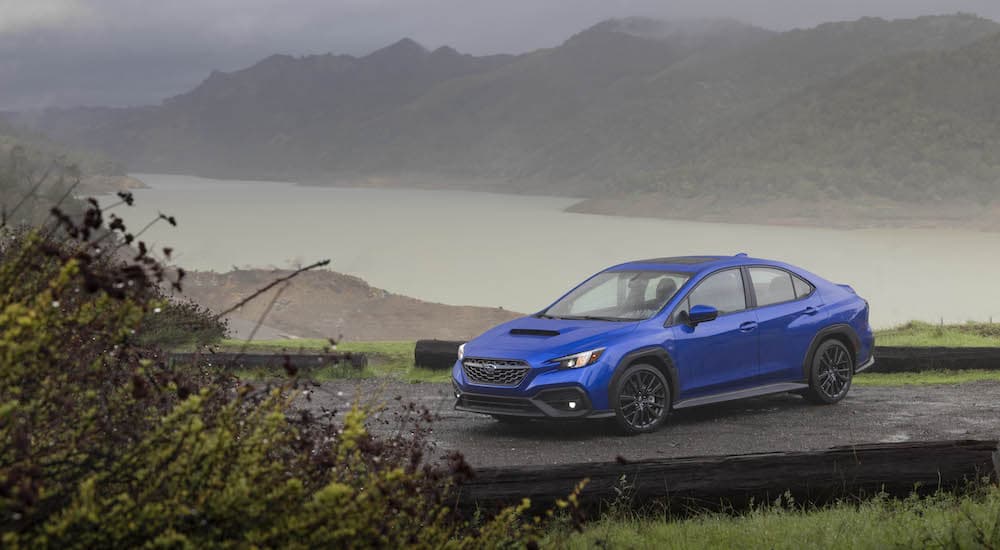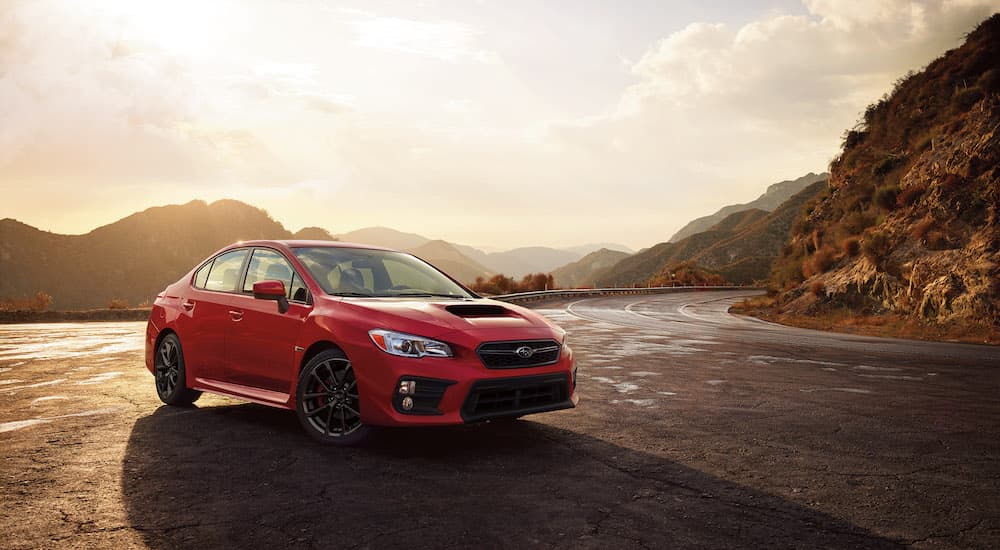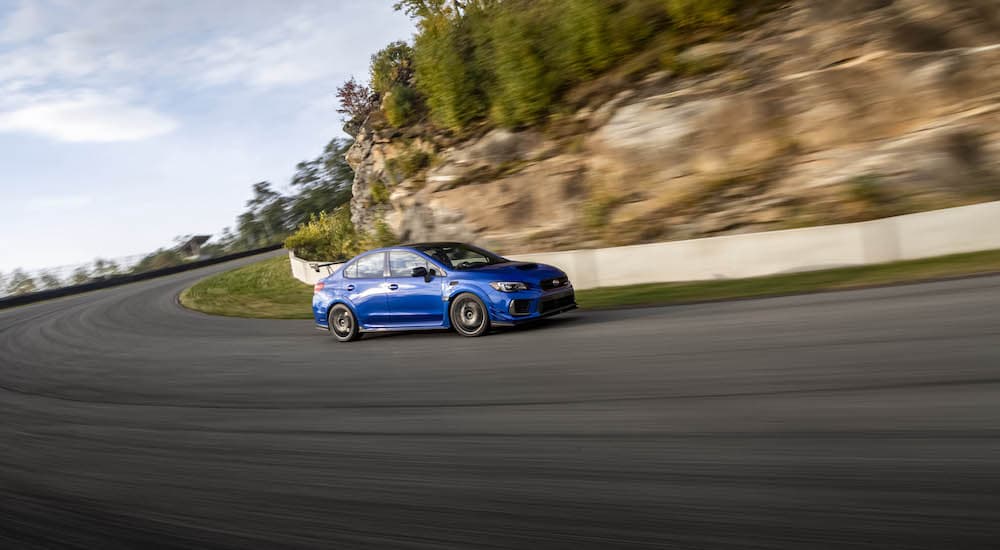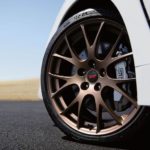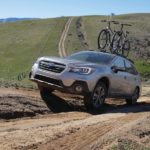A visit to your local Subaru used car dealership can turn up all sorts of unexpected surprises. From rugged, best-selling crossovers like the Outback and Forester to the roomy, three-row Ascent, there’s bound to be something for everyone. Known for their practicality, fuel-efficient continuously variable transmissions, and standard all-wheel drive, Subaru’s vehicles have become the go-to choice for those seeking a safe, reliable ride at a good price.
Despite this family-friendly reputation, one of the brand’s most popular models resides in a totally different realm than the rest of the lineup, with few Subaru models garnering quite the same following as the sporty WRX. Starting off as a variant of the popular Impreza, this all-wheel drive sport compact has made a big impact since debuting as a standalone model in 2015. A product of Subaru’s success in the world of motorsports, the WRX brings the dirt-slinging antics of the rallycross world to the consumer market, providing a fun alternative to the rest of the brand’s lineup.
Since 2022 marks the debut of the second-generation WRX, that seems like as good of a reason as any to take a closer look into the model’s unique history. Let’s trace the genesis of this iconic model, look at what makes it such an enduring favorite of the high-performance crowd and see which used models offer the best value on the pre-owned market.
Rally Roots
While Subaru has become a household name in the world of rally racing, that wasn’t always the case. Founded in the early 1950s, the automaker was originally focused on producing small, efficient “people cars” at the urging of the Japanese government. That niche served the company well for a time, but by the early 1980s, Subaru was ready to inject a little excitement into its lineup. There are few easier ways to accomplish this goal than entering the high-octane world of motorsports, and Subaru settled on rallycross as its specialty.
The brand entered the fray in 1980 with a souped-up rally version of the Leone dubbed the RX Turbo. Subaru found middling success on the circuit for much of the 1980s until a fateful relocation changed the company’s rally fortunes. In 1989, Subaru moved its motorsport division––Subaru Tecnica International (STI)––from Japan to Banbury, England. The team’s first project was replacing the Leone with a rally-ready take on the recently introduced Legacy that could offer stiffer competition on the world rally circuit, thanks mainly to the inclusion of a new flat-four Boxer engine.
The innovative engine takes its name from the horizontal movement of its pistons, which are said to resemble a boxer throwing punches. It has a few notable advantages over its more traditional competitors. First off, the longitudinal Boxer layout allows power to flow more directly to the all-wheel drive system, reducing inefficiencies and netting the engine higher fuel economy. The unique shape also makes for a lower center of gravity which is not only safer in the case of a crash but also results in a more agile, responsive ride. Lastly, the Boxer engine produces fewer vibrations than traditional engine designs, thanks to the motion of the horizontal pistons canceling each other out.
The Subaru Legacy RS debuted at the World Rally Championship’s 1990 Safari Rally but would only see modest success in the rally circuit at the start. The compact earned its first podium finish when it took third place at the 1991 Swedish Rally, but big things were on the horizon as storied rally driver Colin McRae joined the team later that year. In 1991, McRae would lift the trophy for the British Rally Championship, earning the Subaru Rally Team its first major win. McRae would replicate his success on the sport’s biggest stage in 1993, winning the Legacy RS’s first and only WRC victory after taking first place at Rally New Zealand.
The WRX Takes the Stage
Subaru introduced the Impreza as a replacement for the Legacy on the racing circuit starting in 1992, along with an aggressive, high-performance version that laid bare the brand’s rally racing ambitions. The Impreza WRX, short for “World Rally eXperimental,” included a 240 hp Boxer engine. But it was the WRX STI version, named after the brand’s motorsports division, that really turned heads in the rally world.
Equipped with a more robust suspension and driver-controlled center differential, the STI variant was not only lighter than other WRX models but also featured increased horsepower. The upgrade to the Impreza was good enough to earn McRae a WRC Driver’s Championship in 1995. It also earned Subaru three consecutive Manufacturer’s Championships throughout the 1990s, cementing the Impreza’s reputation as a serious competitor on the rallycross circuit.
The success of the Impreza in the WRC boosted sales of the fledgling Impreza WRX, which quickly earned a reputation for its nimble handling, powerful-yet-lightweight engine, and endless customization options. The WRX didn’t arrive on North American soil until 2002, a few years into the Impreza’s second generation, with the STI version following in 2004. It was the perfect time to introduce these models to the American market. Subaru drivers had won the WRC Driver’s Championship in both 2001 and 2003, and consumers were eager to try the sporty compact out for themselves.
Subaru continued to tweak the WRX, though it went a little overboard in 2008 with an attempt to bring the model into the mainstream. The redesign included a softened suspension and toned-down styling, robbing the WRX of some of its most unique attributes, and Subaru backtracked in 2009. The failed experiment might have been a lesson for Subaru. Recognizing the strong following behind the WRX, the brand decided to spin the compact off as its own model for the 2015 model year.
Best Used Subaru WRX Models
Going into 2022, the WRX is moving into its second generation as a standalone model, but plenty of affordable pre-owned models are still available on the used market. Let’s explore some of the best, starting with the debut 2015 model.
2015 Subaru WRX
While the first standalone WRX model shares a lot of attributes with its Impreza forerunner, the compact is distinguished by its more powerful engine, firm suspension, oversized brakes, low ride height, and large hood intake. The body panels might be the vehicle’s most distinctive feature over the old Impreza-based model, with Subaru redesigning the entire front end and rear quarter panels to give the WRX a silhouette all its own.
The 2015 WRX saw some notable upgrades under the hood, with Subaru replacing the EJ-series engine from the Impreza with a new FA20F setup featuring 268 hp, direct injection, a high compression ratio, and a twin-scroll turbocharger. Mounted towards the front of the engine bay, the turbocharger improved the car’s center of gravity and went a long way in giving the model more rally-like handling.
Sold with either a six-speed manual transmission or available Lineartronic CVT, the first-generation WRX quickly earned a reputation as a rally car for the masses. The CVT brought paddle shifters into the mix, giving drivers the chance to emulate a six-speed transmission in Sport mode or an eight-speed in Sport Sharp.
The 2015 WRX STI followed much the same blueprint, although it nixed the new engine in favor of the EJ-series carried over from the Impreza WRX STI. The STI might have a little more power with 305 hp and 290 lb-ft of torque, but the updated FA20F engine on the WRX is just too good to pass up, thanks to its smoother power delivery.
2018 Subaru WRX
A mid-cycle refresh in 2018 saw Subaru upgrade the WRX’s suspension and bring the model into the modern era with the introduction of Recaro eight-way power driver’s seats, heated exterior mirrors, a 5.9-inch high-definition display, and an upgraded version of Subaru’s EyeSight driver-assist features. The 2018 model also received revamped electric power steering and a new grille that served as a bit of a throwback to some early-2000s WRX Impreza models.
It’s always tough to balance the performance of a rally-inspired vehicle with the comfort of an everyday driver, but Subaru was finding its way, slow but steady. The 2018 WRX is a great example of this evolution, integrating features like sound-dampening material in the cabin that allow a driver to enjoy the hum of the engine without drowning out their favorite album or podcast.
2019 Subaru WRX STI S209
If the STI version of the WRX ups the ante when it comes to power and performance, then the special edition S209 takes it to another level entirely. Produced in a limited run of just 209 models, a used 2019 Subaru WRX STI S209 isn’t the easiest model to get your hands on, but it is worth a second look. The first S series version of the STI to be made available on the American market, the model originally came with a hefty price tag of nearly $65,000, making it the most expensive Subaru ever built.
What does a driver get for all that money? Well, the most power ever packed into a Subaru, to start. The compact’s modified EJ257 engine produces a whopping 341 hp and 330 lb-ft of torque, but that’s just the beginning. Subaru also added some canards to the front of the WRX STI S209, improving the model’s aerodynamic properties, and threw in the carbon roof and wing from the STI Type RA to boot. This limited edition comes with Dunlop SP Sport Maxx GT600A tires that do an excellent job of sticking to the road and has an available blue color scheme with gold wheels that harkens back to the WRX’s glory days on the WRC circuit.
2006 Subaru Impreza WRX
Lastly, let’s throw it back to a version of the WRX from when it still carried the Impreza name. These models might be getting on in years, but well-maintained examples can still offer a real bargain on the used market for drivers in the know. The 2006 version featured revised styling and an upsized engine that boasted a 2.5-liter capacity instead of the previous year’s 2.0-liter displacement. This half-liter of growth was enough to impart three extra horsepower and an additional 18 lb-ft of torque, giving the 2006 WRX a little more pep in its step.
Other mechanical upgrades include larger brakes, an improved five-speed transmission, and a faster steering ratio, which have the combined effect of making the WRX a heck of a lot of fun to drive. On the appearance end, the 2006 Impreza WRX received a new grille and headlights, updating the compact’s look in a way that resonated with drivers. A favorite among longtime WRX fans, the 2006 model gained even more of a following in 2017 when it was featured in the exhilarating opening sequence of the action heist film Baby Driver.
An Automotive Cult Classic
The Subaru WRX occupies a special place in the brand’s history. This model helped launch the automaker’s motorsports career, making the Japanese brand a serious contender in the rally world. Subaru has managed to parlay that success into the consumer market, producing a lineup of rally-inspired vehicles that proves the brand knows a thing or two about injecting a little excitement into the driving experience.
Since breaking off from the Impreza badge in 2015, the WRX and WRX STI have gained a cult following of their own and given Subaru the chance to experiment with the latest and greatest automotive technology. While the examples listed above are some of our top picks for the best used models on the market, it’s hard to go wrong when it comes to Subaru’s high-performance compact. If you want to experience the WRX for yourself, just keep an eye on the classifieds, and you’ll see what all the fuss is about.
